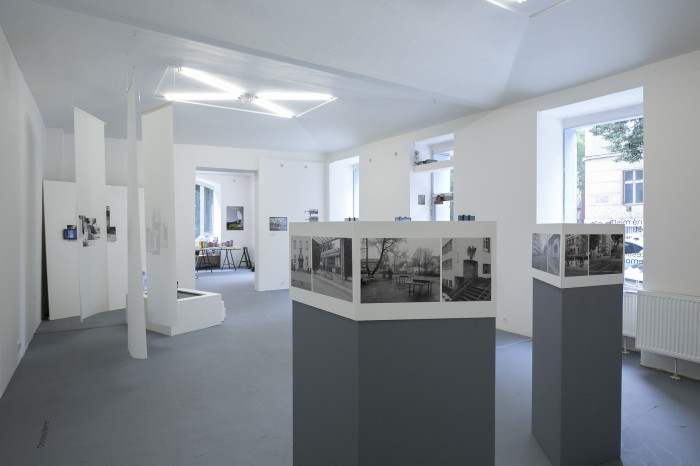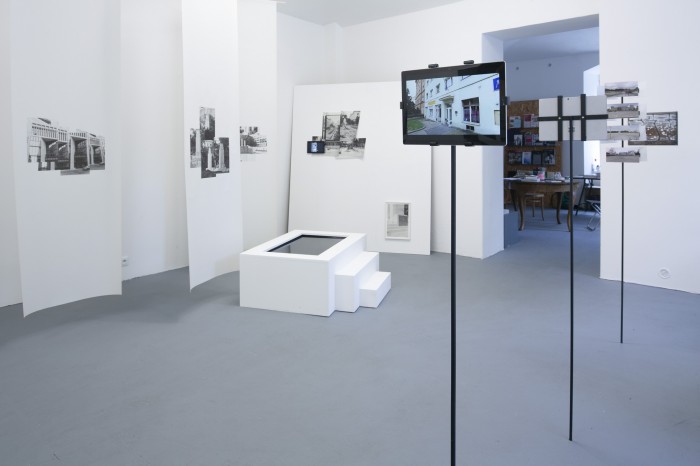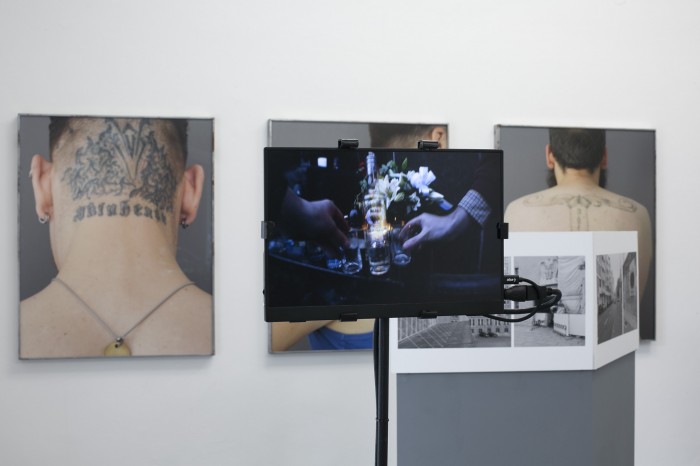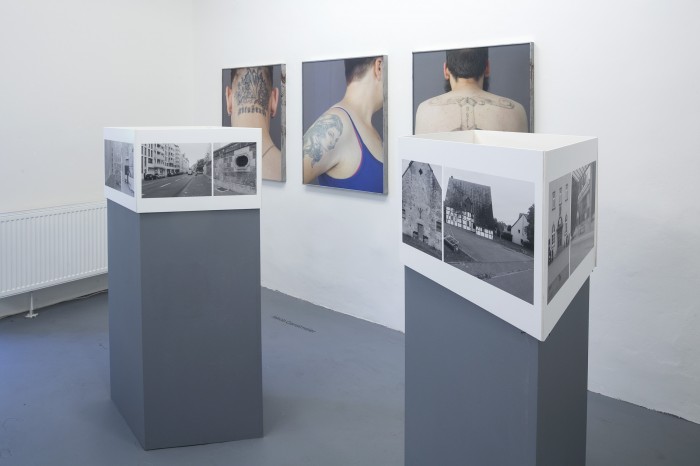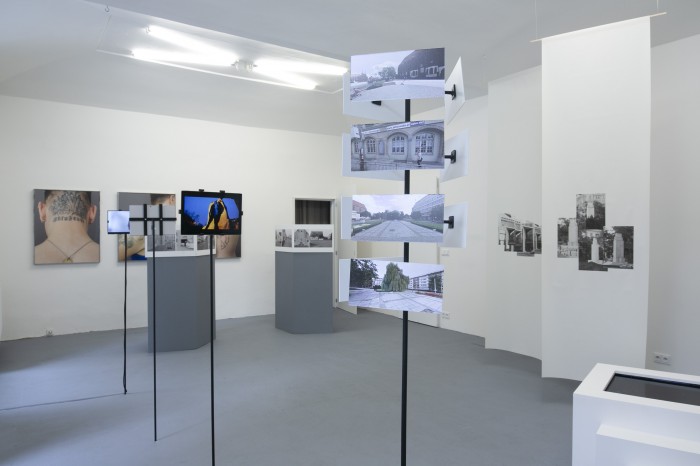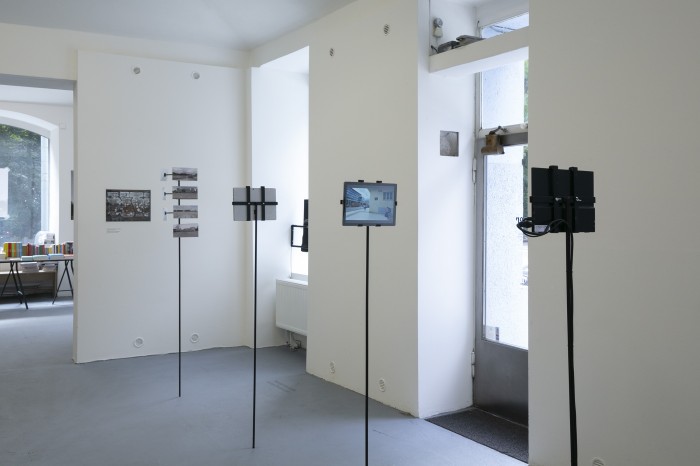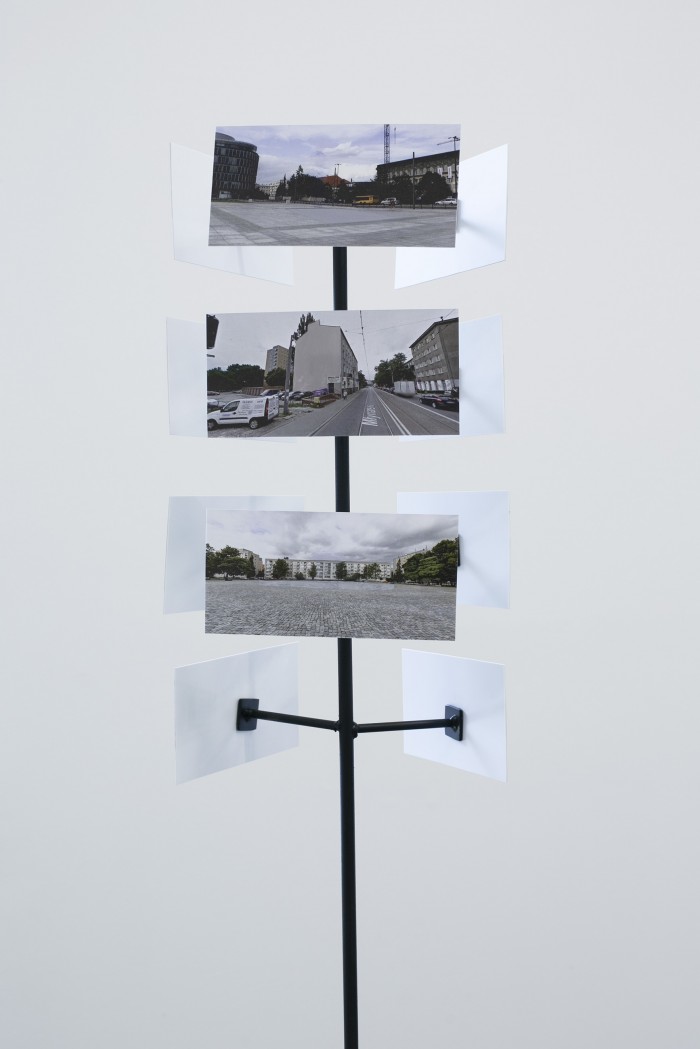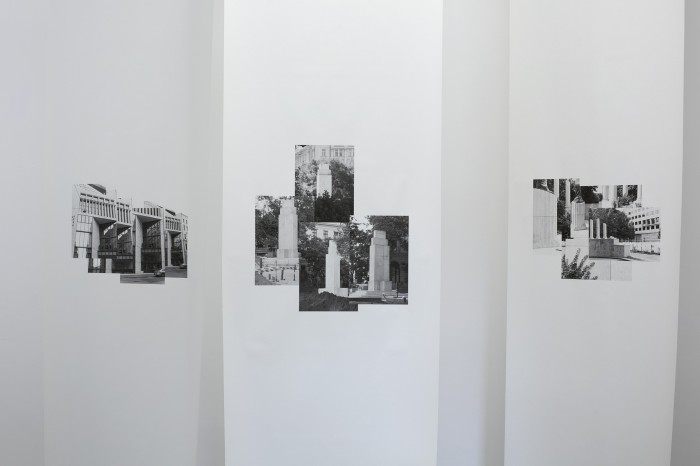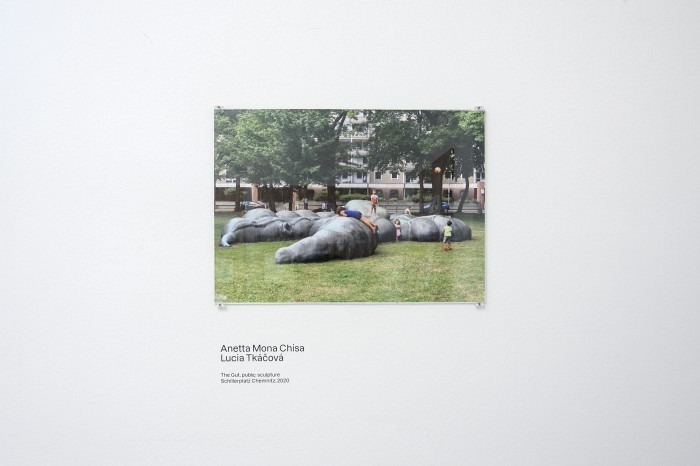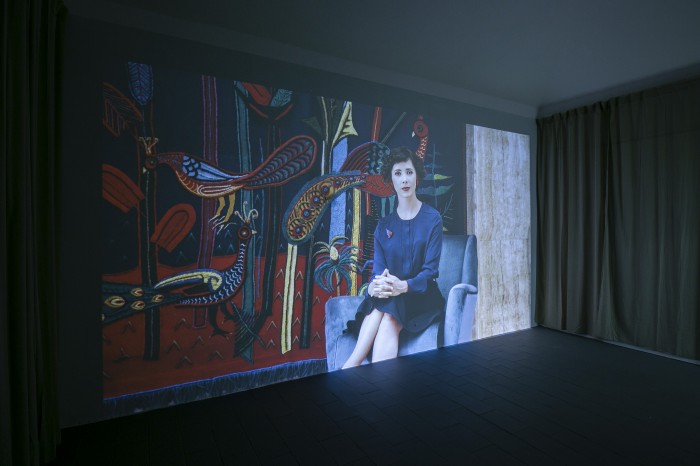Contesting Sites of Memory
{~ '2022-09-14 00:00:00' | amDateFormat: 'D/M' ~}–{~ '2022-11-05 00:00:00' | amDateFormat: 'D/M/Y' ~}
Curator: Tereza Rudolf, Elisabeth Pichler, Markéta Mansfieldová

We witness the destruction of memorial or commemorative sites not only in military conflicts. Following a 2020 intervention by supporters of the Black Lives Matter movement, the monument to Winston Churchill near the British parliament buildings now bears the inscription “CHURCHILL WAS A RACIST.” The same text was later added to a statue of Churchill in Prague. At the time, part of the general public rejected the act as pure vandalism, and much critique was then based in the conviction that acts or words effected a century ago cannot be considered through today’s optics. Other voices (and this exhibition is among them) emphasize that memory – and particularly collective memory – must be subjected to certain doubts and meticulous reexamination. The demolition of the monuments to “old friendships” then often symbolically confirm the end of a particular political alliance. It is an essentially violent act, despite the fact that generally speaking, much greater and realer violence usually takes place in the background. While the bronze heads of statesmen fly through the air or are newly erected in order to demonstrate the ideological interests of the ruling political groups, what remains sidelined are the much more subtle “sites of memory” that are created and perish outside the larger and more visible sociopolitical debates.
The “Contesting Sites of Memory” exhibition refers to the work of French historian Pierre Nora and his theory of “sites of memory” (les lieux de mémoire), which also became the starting point for many considerations of the task and role of architecture in the creation of the historical consciousness of an imaginary society, as well as allegiance to this society. But over the last three decades, Nora’s idealized notion of a unified national identity that is manifested in sites of memory has been confronted with a critique from post-colonial and decolonial positions. As demonstrated by the monuments of Winston Churchill or Hungarian politician Miklos Horthy, who is the subject of a work by Austrian artist Christina Werner, sites of memory represent the historical narratives of the majority, not of everyone, as they are created “top down” by those who have access to participation in political and cultural affairs.
The selected artworks examine the function and significance of “monuments” (in a broad sense of the world) and intentionally abandon the traditional concept of a memorial – a towering statue of a statesman. This is also the direction of the work by the art duo of Anetta Mona Chisa and Lucia Tkáčová, who created a bronze sculpture of the intestines of Karl Marx for the public spaces of the city of Chemnitz. They thus defined themselves against the largest bust of Marx in the world, located in the same Saxon city, contrasting the “head-based” individualism with a sense of togetherness and the need for solidarity in contemporary society, all represented by the intestinal microbiome. The bronze guts that decorate the Schillerplatz park are represented at the exhibition by a poster and an accompanying text: “The Head, The Gut, The Change.”
The need to reform, deform, and change national monuments, as well as the less striking monuments formed by a more personal approach to the past, are the subject of a 2015 dialogue between two artists, Tomáš Kajánek and Artur Żmijewski, who held a visual conversation on the topic of sites of memory. Their interest lay in the intersection of personal and politically guided reminiscences, which is reflected on one hand in large monuments and on the other hand hidden at entirely inconspicuous locations. The march of history often leaves behind much more pious traces as if by chance than marble boards at which wreaths are to be laid, as demonstrated in Kajánek’s documentation of facades in Prague damaged by gunfire.
Facades and public surfaces as symbolic and ideological sites of communication are also the subject of the work of Jakob Ganslmeier, who creates parallels between them and human skin as surfaces turned towards their surroundings and its gazes. In his work, Ganslmeier follows the removal of tattoos with extreme right-wing topics and the traces this process leaves behind on the skin, placing them next to fragments of Third Reich symbols still apparent on many prominent buildings.
Slovenian artist Jasmina Cibic uses four actresses to activate architecture as the silent witness of grand events and important political decisions. She thus gives a voice to Belgrade’s Palace of the Federation, built in 1961, or rather lets period political proclamations on the role of architecture and art resound throughout its high modernist interiors. Along with Cibic and the other participating artists, we can thus observe how, by whom, and why visual language is instrumentalized in public spaces.
“Sites of memory,” as described by Pierre Nora, are not stable and untouchable monuments to which the historical memory of the majority clings. We must therefore overcome the idea that such authoritatively created sites can speak in the language of everyone, instead focusing on ideologically ambiguous locations, i.e. sites on whose disputed grounds discussions can take place, and which can be transformed, in the long term, outside the official level.
Artists: Christina Werner, Anetta Mona Chisa & Lucia Tkáčová, Tomáš Kajánek & Artur Żmijewski, Jakob Ganslmeier, Jasmina Cibic
Part of Fotograf Festival #12
Image: Anetta Mona Chisa & Lucia Tkáčová, Collage for the project The Gut, 2020, 2022
Installation photos: Tomáš Hrůza
Čeněk Pýcha, Co si pamatuješ? A proč? O tíze vzpomínání ve veřejném prostoru, A2, 2022, č. 22 https://www.advojka.cz/archiv/2022/22/co-si-pamatujes-a-proc

